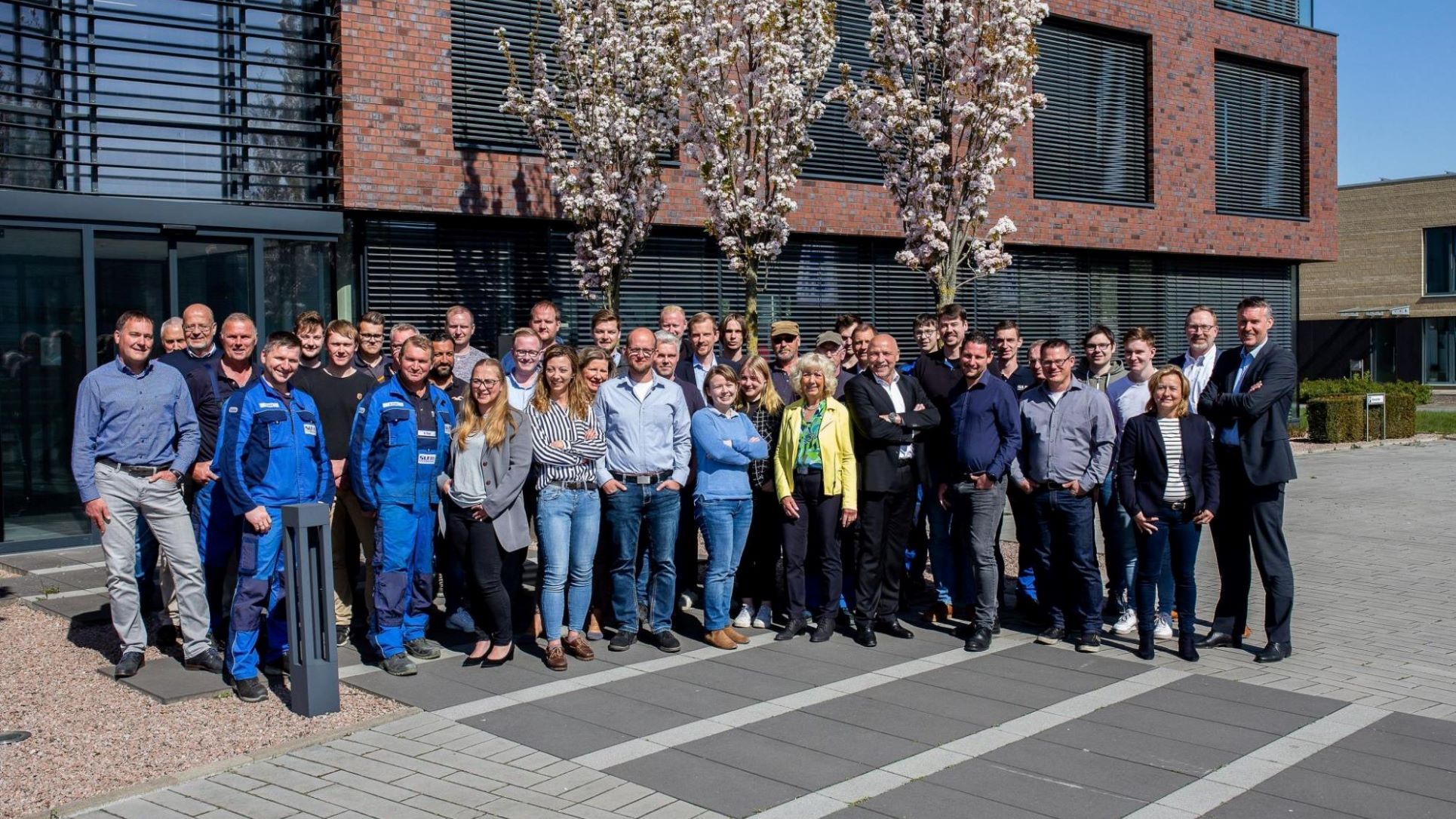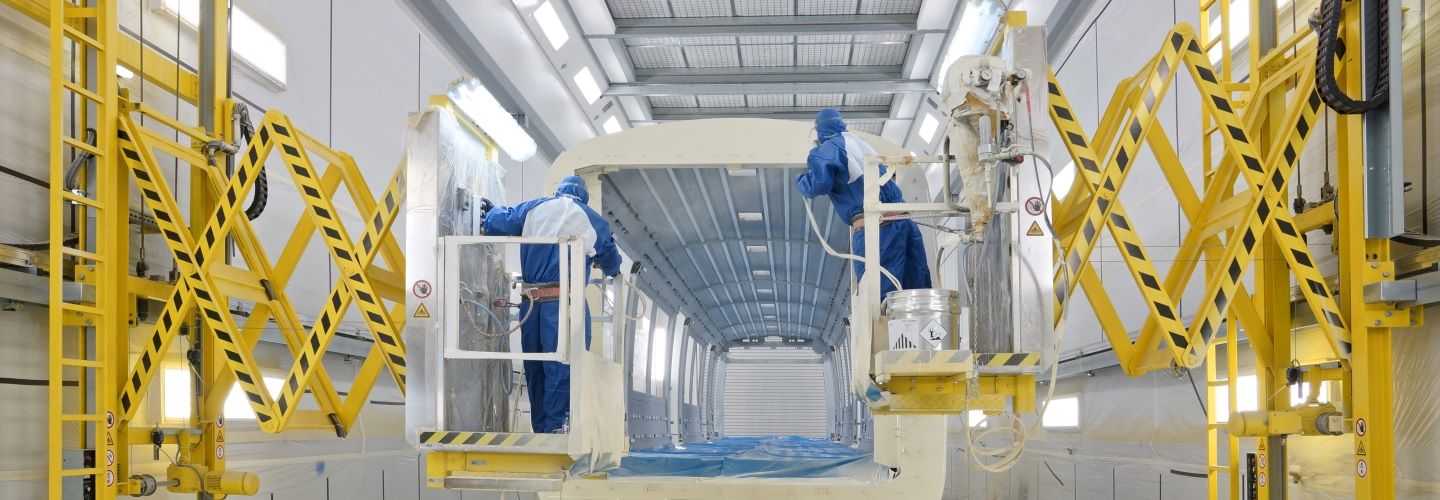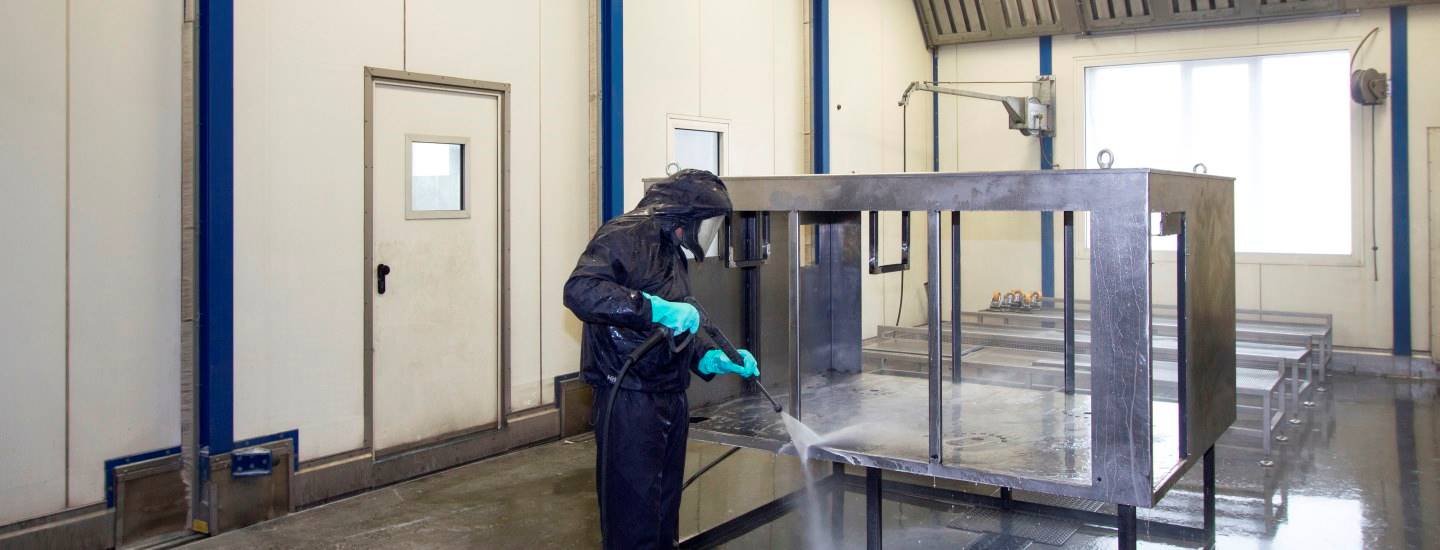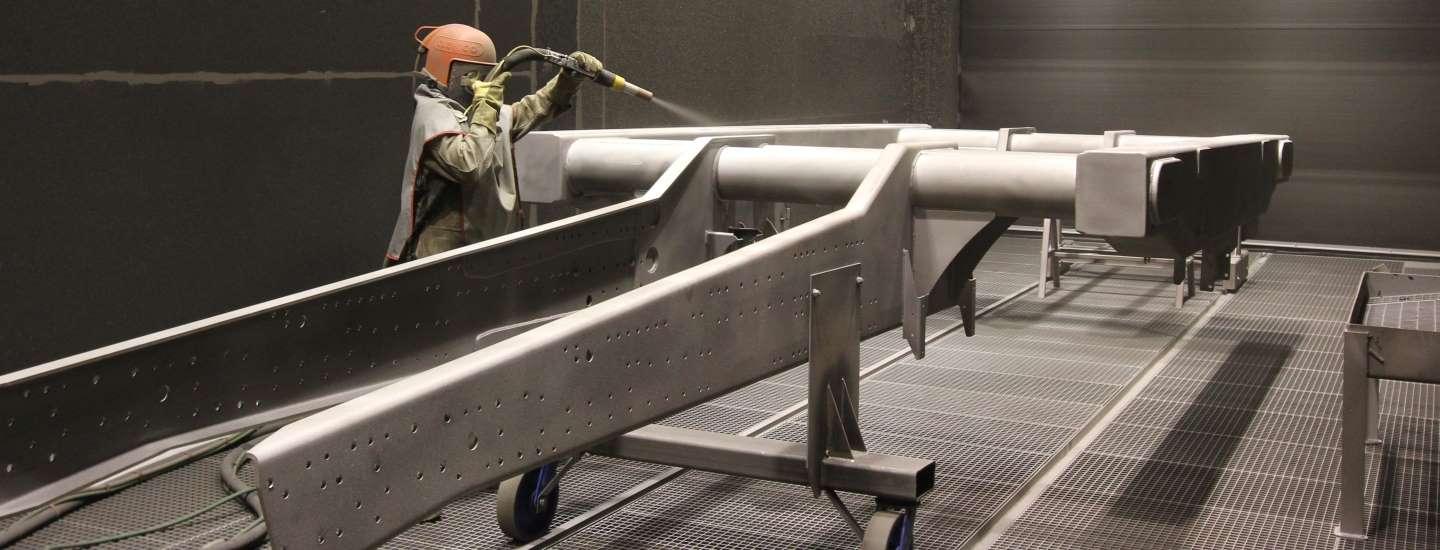FAQ - Frequently asked questions
Surface treatment in general and the SLF-niche of surface treatment in particular is a broad technical field which keeps constantly changing. So it is very difficult to stay aware of what is state of the art technology and required regulation today and and to separate between substantially important and insignificant information. This is particularly true if you don't work in this sector on a daily basis.
In order to assist your search for information regarding "our" surface treatment technology, we have set up this constantly growing Frequently-Asked-Questions section. Here we answer basic questions which arise very often in practice in order to give you a first orientation for your informational search. We also list the most important and most frequently consulted norms and regulations etc. which are to be considered when it comes to construction or operation of pre-treatment, blasting or paint spraying systems.
Should you require more in-depth information or want to provide feedback, please contact our specialists directly!
Blasting offers various possibilities for the treatment of surfaces. It serves to prepare the surface for an upcoming surface coating.
Burring
During the machining or manufacturing process, metallic workpieces often develop fraying and chipping and even protruding edges. These are removed by blasting or the edges are rounded off.
Cleaning
By means of lower pressure and the appropriate media, rust and scale can be removed from workpieces before further processing.
By means of lower pressure and the appropriate media, rust and scale can be removed from workpieces before further processing.
Shot-Peening (surface hardening)
Shot peening or hardening or shot peening is a process that considerably increases the service life of highly used components by blasting the surface in a targeted manner.
Shot peening or hardening or shot peening is a process that considerably increases the service life of highly used components by blasting the surface in a targeted manner.
Sand removal
Steel media are particularly suitable for removing sand from castings, as they remove fine sand and burrs.
Decoating
Paint stripping and decoating of old steel structures is an important part of the surface preparation for new painting. Depending on the workpiece, the suitable blasting medium and the necessary pressure of the blasting nozzle is selected. . Depending on the workpiece, the suitable blasting media and the necessary pressure of the blasting nozzle are selected.
Paint stripping and decoating of old steel structures is an important part of the surface preparation for new painting. Depending on the workpiece, the suitable blasting medium and the necessary pressure of the blasting nozzle is selected. . Depending on the workpiece, the suitable blasting media and the necessary pressure of the blasting nozzle are selected.
Sweep-Blasting
With sweeping, also known as sweep blasting, the surface of freshly galvanized components is slightly roughened to allow better adhesion of subsequent paint and powder coatings. This is done with the help of mineral media.
With sweeping, also known as sweep blasting, the surface of freshly galvanized components is slightly roughened to allow better adhesion of subsequent paint and powder coatings. This is done with the help of mineral media.
Injector blasting
The injection process is used when relatively small products are to be blasted and/or high blasting intensity is not desired. It is often used for manual blasting cabins or small blasting machines.
The injection process is used when relatively small products are to be blasted and/or high blasting intensity is not desired. It is often used for manual blasting cabins or small blasting machines.
Air Blasting
The compressed air process is suitable for larger series products that are to be blasted. The intensity is 4-5 times greater than with the injection method. It can be used for manual blasting rooms as well as for automatic blasting.
The compressed air process is suitable for larger series products that are to be blasted. The intensity is 4-5 times greater than with the injection method. It can be used for manual blasting rooms as well as for automatic blasting.
Wet blasting
Wet blasting is often used when oily products are blasted with a relatively low intensity.
Wet blasting is often used when oily products are blasted with a relatively low intensity.
Dry ice blasting
The special feature of dry ice blasting can already be found in its name. The media used here is dry ice. . Frequent areas of application are the cleaning of components.
The special feature of dry ice blasting can already be found in its name. The media used here is dry ice. . Frequent areas of application are the cleaning of components.
Centrifugal blasting
With the blast wheel process, both larger and smaller parts can be blasted automatically and is therefore ideal for mass production.
With the blast wheel process, both larger and smaller parts can be blasted automatically and is therefore ideal for mass production.
There is. With the blasting robot ReCo-Blaster® developed by us as well as with automatic pressure blasting machines, we also offer equipment for automated blasting processes for various applications.
The TA-Luft is complied for all blasting systems that lead the exhaust air outside. The MAK values are taken into account for systems operated with circulating air.
The current machine guidelines, the VDMA standard sheets VMA 24379 and VDMA 24388 must be taken into account for each system.
Coating systems or coating processes can be divided into so-called corrosiveness categories. Starting with category C1, where the workpiece is located in heated buildings with a neutral atmosphere, up to C X for workpieces which are exposed to very high humidity in industry (e.g. offshore plants) and thus very strong influences. Other environments such as fresh, salt or brackish water as for the soil are also categorized.
The duplex process is a corrosion protection system which consists of hot galvanizing with subsequent coating.The mechanisms of duplex coatings are based on the mutual protection of both coatings. On the one hand the zinc coating is protected from atmospheric and chemical influences by the powder application, on the other hand the zinc coating blocks infiltration of the coating.
Due to the long period of protection that this method provides, it is mainly used in construction and road traffic.
Due to the long period of protection that this method provides, it is mainly used in construction and road traffic.
Depending on the type of surface treatment (see blasting types (link to FAQ, description of the different blasting types) the result is evaluated in different ways.
If the blasting process is used to clean the workpieces, the so-called cleaning blasting, the processed surface is evaluated according to the surface cleanliness grades Sa 1, Sa 2, Sa 2.5 and Sa 3 based on DIN EN8501-1.
Especially if a coating is to be applied subsequently from the workpiece, the achieved roughness characteristics (bsw, Rz) are also a decisive measurement parameter.
In shot peening, the Almen values given in mm or less and the compressive strains (Pa) generated indicate the result obtained.
If the blasting process is used to clean the workpieces, the so-called cleaning blasting, the processed surface is evaluated according to the surface cleanliness grades Sa 1, Sa 2, Sa 2.5 and Sa 3 based on DIN EN8501-1.
Especially if a coating is to be applied subsequently from the workpiece, the achieved roughness characteristics (bsw, Rz) are also a decisive measurement parameter.
In shot peening, the Almen values given in mm or less and the compressive strains (Pa) generated indicate the result obtained.
Almen values are used to evaluate the blasting intensity during shot peening. Here, a so-called Almentest or test strip is fixed and selectively blasted. The subsequently measured deformation of the test strip in mm or less is the Almen value.
These are mechanical strains that are created during shot peening by plastic deformation in the surface area of the machined workpieces and thus lead to increased durability.
The DARC® technology is a heating process developed by us. It is used in powder furnaces and paint dryers and is based on a mix of convection (circulating air) and long-wave infrared radiation, so-called dark radiation.
The DARC® technology is particularly suitable for thick-walled components for baking powder coatings or as an adhesive water dryer.
Whether sidewall guided or mobile, our scissor work platforms as well as our swideall guided swivel lifting work platforms always allow an ideal working position.
The working platform should not be integrated directly into the cabin? Our mobile scissor lifting work platforms can be used completely individually.
Are you looking for a space-saving working platform, whether in washing or preparation cabins, blasting or zinc spraying rooms or paint spraying systems? Our vertical telescopic lifting work platforms offer you a large, longitudinally and transversely movable platform cage which, in combination with a rotation range of almost 360° and telescopic lift, allows you to work in almost any position in the cabin.
The working platform should not be integrated directly into the cabin? Our mobile scissor lifting work platforms can be used completely individually.
Are you looking for a space-saving working platform, whether in washing or preparation cabins, blasting or zinc spraying rooms or paint spraying systems? Our vertical telescopic lifting work platforms offer you a large, longitudinally and transversely movable platform cage which, in combination with a rotation range of almost 360° and telescopic lift, allows you to work in almost any position in the cabin.
The sophisticated system consisting of pump pit, chambers, belt filters, sedimentation tank and many other technical features cleans the process water and enables cost-saving multiple use. (If the text here is to be more detailed, here is a suggestion for an extension: An example: In order to keep the use of the necessary cleaning agents and fresh water quantity as low as possible, level probes permanently register the water level in the storage tank. This is automatically compensated and the cleaning concentrate is re-dosed according to the amount of water added).
Our portfolio ranges from suspension chain conveyors, Power&Free, fully automatic conveyors and circular conveyors to the classic, manual manual push conveyor. Thus we guarantee each of our customers an optimal conveying concept for their workpieces and work processes.
The SLF ReCo Painter® is a painting portal for automatic, reproducible, high-quality, efficient and fast coating of large components such as box bodies for trailers or containers.




